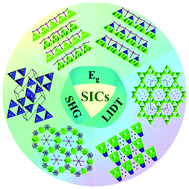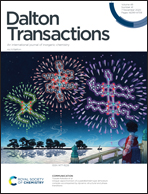Salt-inclusion chalcogenides: an emerging class of IR nonlinear optical materials
Abstract
Non-centrosymmetric metal chalcogenides such as AgGaS2 and AgGaSe2 are two of the commercial nonlinear optical (NLO) crystals widely used in the infrared (IR) region. Nevertheless, the inherent incompatibility between the wide energy gap (Eg) and large second-harmonic generation (SHG) efficiency (dij) hinders their high-power laser applications. Recently, the development of salt-inclusion chalcogenides with non-centrosymmetric structures has attracted more and more attention and interest owing to their intensive potential applications originating from their wide Eg, strong dij, ultrahigh laser-induced damage thresholds (LIDTs) and large IR transmission range. In this frontier paper, we review the recent progress of salt-inclusion chalcogenides (including 28 related compounds) as favourable candidates for IR-NLO materials, which can be divided into 3 types according to their chemical compositions and structural characteristics: (i) the [RaXb][GanQ2n] type and its derivatives, (ii) [NaBa4Cl][Ge3S10] and its derivatives, and (iii) the [A3X][MB12(MQ4)3] type. The relationships between the non-centrosymmetric structures and NLO properties of these 3 types of compounds are summarized and briefly remarked. In addition, the present challenges of creating new IR-NLO salt-inclusion chalcogenides and future perspectives in this field are discussed.

- This article is part of the themed collection: 2020 Frontier and Perspective articles


 Please wait while we load your content...
Please wait while we load your content...